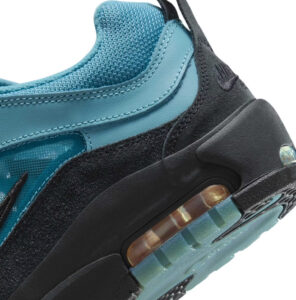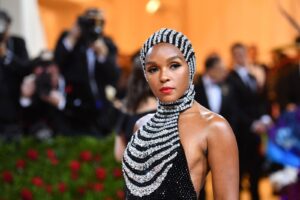Brandi Kole’s 2024 piece, Bow, currently on display at SeeSaw Gallery, is a masterful exploration of textile art that bridges craftsmanship and conceptual depth. Known for her innovative use of fabric, thread, and mixed media, Kole pushes the boundaries of traditional fiber arts, offering pieces that evoke deep emotional resonance while maintaining a tactile, visually compelling presence. Bow exemplifies her artistic approach, intertwining narrative and materiality in a compact, intimate format.
Measuring just 9 by 10 inches, Bow is deceptively simple in its scale but rich in texture and detail. Kole employs a combination of cotton, acrylic, and thread to create a layered, intricate piece that feels both personal and universal. The use of mixed media is significant in her work, as it allows her to create multi-dimensional surfaces that engage the viewer on both a visual and tactile level. The materials she chooses, especially thread, carry symbolic weight; thread is often associated with connection, continuity, and the act of weaving stories or experiences together.
In Bow, the interplay between these materials is essential to understanding the piece’s emotional and conceptual depth. The layers of fabric and thread suggest a process of construction and deconstruction—ideas that are central to Kole’s work, which often explores themes of identity, memory, and the human condition. The mixed media approach also aligns with contemporary trends in textile arts, where artists are increasingly using non-traditional materials to challenge the boundaries of what fiber art can be.
At the heart of Bow lies an exploration of dualityand tension. These themes are part of the larger exhibition “UnSettled”, where Kole’s work is showcased alongside that of Rock CYFI Martinez. The exhibition, as described by SeeSaw Gallery, delves into the tension between opposing forces—whether they be emotional, physical, or conceptual. In this context, Bow can be interpreted as a metaphor for balance and fragility. The title itself, Bow, suggests both an object of beauty and utility, as well as the act of bending, yielding, or acquiescing under pressure. These dual meanings are embedded in the fabric of the work, inviting viewers to contemplate the delicate balance between strength and vulnerability in their own lives.
Kole’s work frequently addresses identity and belonging, themes that resonate throughout “Unsettled”. In Bow, the layering of materials could be seen as a representation of the multiple layers of identity we each carry—constructed through personal history, relationships, and societal roles. The act of stitching or threading, meanwhile, serves as a metaphor for the ongoing process of building and re-building oneself. In this way, Kole’s work speaks to the fluid nature of identity, where stability is often an illusion, and we are constantly in a state of becoming.
Impression
Visually, Bow is minimalist, but its simplicity is deceptive. The limited color palette and the small size of the piece draw the viewer in, forcing a closer inspection of its intricate details. This intimacy is a hallmark of Kole’s work, which often demands that the viewer engage with it on a personal, almost meditative level. The careful placement of thread and fabric creates a sense of rhythm and movement, giving the piece a dynamic quality that contrasts with its static, framed nature.
The tactile nature of the materials also contributes to the emotional impact of the work. Textiles, by their very nature, evoke a sense of comfort and familiarity, reminding viewers of personal associations with fabric—whether it be clothing, blankets, or other domestic items. In this way, Bow is imbued with a sense of nostalgia and warmth, even as it grapples with more complex, abstract themes.
The Context of Contemporary Fiber Arts
Bow is not just a standout within Kole’s own body of work but also within the broader context of contemporary fiber arts. Over the past few decades, fiber art has undergone a significant transformation, moving from the margins of the art world to a more central position. Once dismissed as “craft” or “women’s work,” textile arts are now recognized for their ability to address critical themes related to gender, labor, and identity. Artists like Sheila Hicks, Faith Ringgold, and El Anatsui have paved the way for fiber artists to be taken seriously within the contemporary art landscape, and Kole’s work is part of this broader movement.
What sets Kole apart is her ability to balance the tactility of textile art with conceptual rigor. While her pieces are visually stunning, they are not merely decorative. Instead, they engage with deep, universal themes, using the language of fabric and thread to communicate ideas about the human experience. In this sense, Bow is both a continuation of traditional fiber arts and a departure from it, as it incorporates modern materials and conceptual frameworks.
Priced at $550, Bow offers an accessible entry point into contemporary art collecting, particularly for those interested in textile-based works. While the price may seem modest in comparison to larger, more established works in the contemporary art market, it reflects the piece’s size and the labor-intensive process involved in its creation. For many collectors, the tactile and personal nature of textile art offers a more intimate connection to the work, making pieces like Bow highly desirable.
Moreover, as the demand for fiber arts continues to grow, pieces like *Bow* are likely to increase in value, both financially and culturally. The shift towards recognizing textile art as a significant form of artistic expression has opened new opportunities for artists like Kole, who are pushing the boundaries of what can be achieved with fabric, thread, and mixed media.
Brandi Kole’s Bow (2024) is a profound exploration of balance, identity, and the human experience. Through her innovative use of textiles and mixed media, Kole creates a piece that is both visually stunning and conceptually rich. The layering of materials and the meticulous attention to detail invite viewers to reflect on their own identities, the tensions they navigate, and the fragile balance between stability and change.
As part of the larger “UnSettled” exhibition at SeeSaw Gallery, Bow holds its own as a singular piece, while also contributing to the broader dialogue between Kole and Martinez about transition and duality. In this way, Bow is not just a work of art—it is a meditation on the complexities of life, presented in a form that is both tactile and thought-provoking. For anyone interested in contemporary fiber arts or the exploration of identity through material, Brandi Kole’s Bow is a must-see, embodying both the personal and the universal in a single, beautifully crafted work.
No comments yet.







